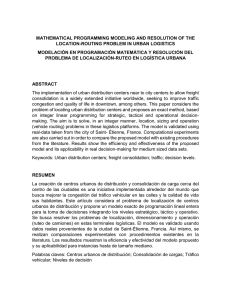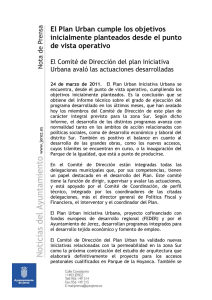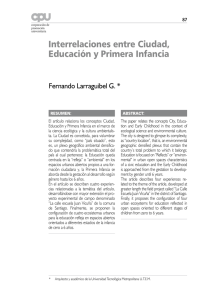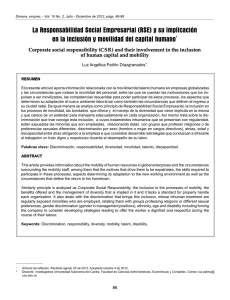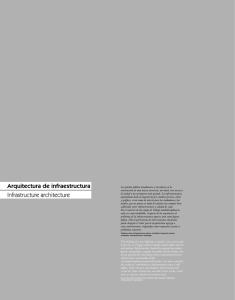RESUMEN Las consecuencias de la crisis ambiental están
Anuncio
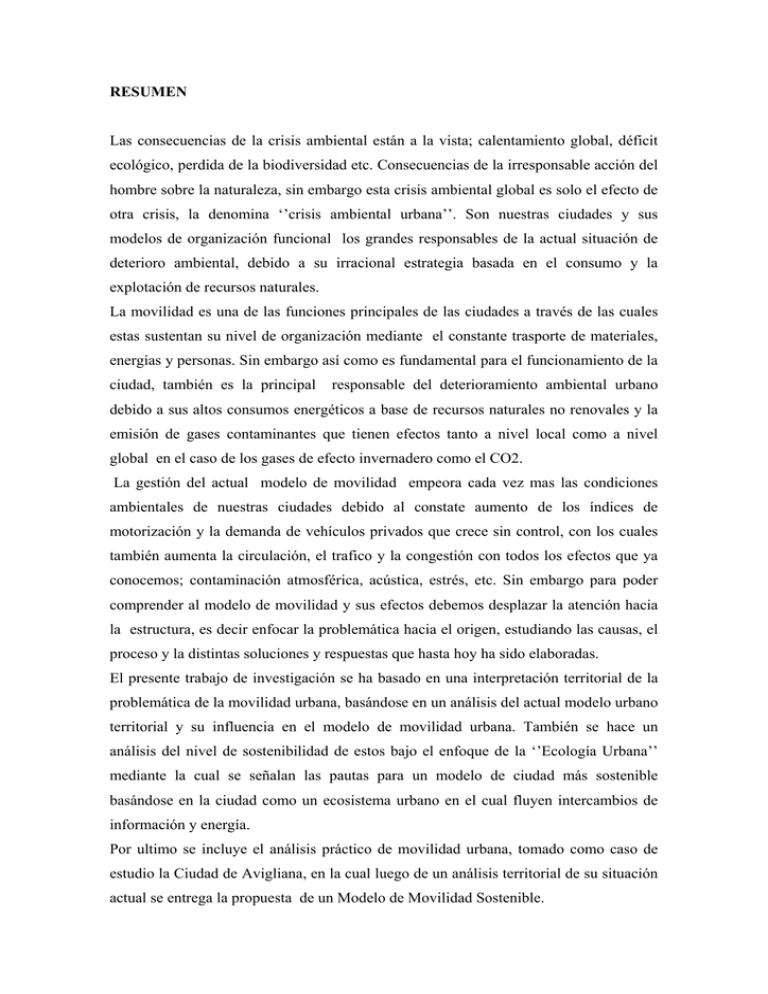
RESUMEN Las consecuencias de la crisis ambiental están a la vista; calentamiento global, déficit ecológico, perdida de la biodiversidad etc. Consecuencias de la irresponsable acción del hombre sobre la naturaleza, sin embargo esta crisis ambiental global es solo el efecto de otra crisis, la denomina ‘’crisis ambiental urbana’’. Son nuestras ciudades y sus modelos de organización funcional los grandes responsables de la actual situación de deterioro ambiental, debido a su irracional estrategia basada en el consumo y la explotación de recursos naturales. La movilidad es una de las funciones principales de las ciudades a través de las cuales estas sustentan su nivel de organización mediante el constante trasporte de materiales, energías y personas. Sin embargo así como es fundamental para el funcionamiento de la ciudad, también es la principal responsable del deterioramiento ambiental urbano debido a sus altos consumos energéticos a base de recursos naturales no renovales y la emisión de gases contaminantes que tienen efectos tanto a nivel local como a nivel global en el caso de los gases de efecto invernadero como el CO2. La gestión del actual modelo de movilidad empeora cada vez mas las condiciones ambientales de nuestras ciudades debido al constate aumento de los índices de motorización y la demanda de vehículos privados que crece sin control, con los cuales también aumenta la circulación, el trafico y la congestión con todos los efectos que ya conocemos; contaminación atmosférica, acústica, estrés, etc. Sin embargo para poder comprender al modelo de movilidad y sus efectos debemos desplazar la atención hacia la estructura, es decir enfocar la problemática hacia el origen, estudiando las causas, el proceso y la distintas soluciones y respuestas que hasta hoy ha sido elaboradas. El presente trabajo de investigación se ha basado en una interpretación territorial de la problemática de la movilidad urbana, basándose en un análisis del actual modelo urbano territorial y su influencia en el modelo de movilidad urbana. También se hace un análisis del nivel de sostenibilidad de estos bajo el enfoque de la ‘’Ecología Urbana’’ mediante la cual se señalan las pautas para un modelo de ciudad más sostenible basándose en la ciudad como un ecosistema urbano en el cual fluyen intercambios de información y energía. Por ultimo se incluye el análisis práctico de movilidad urbana, tomado como caso de estudio la Ciudad de Avigliana, en la cual luego de un análisis territorial de su situación actual se entrega la propuesta de un Modelo de Movilidad Sostenible. ABSTRACT The consequences of the environmental crisis are at sight; global warming, ecological deficit, biodiversity loss, amongst others. These consequences are, in part, the result of the irresponsible action of the man on the nature. However, this environmental global crisis is also the effect of another crisis, called like “Environmental Urban Crisis” Our cities and his models of functional organization are the big responsible in the current environmental deterioration, due to his irrational strategy, based on the consumption and the exploitation of natural resources. The mobility is one of the principal functions of the cities where these support his level of organization, by means of the constant transport of materials, energies and persons. Nevertheless, as well as it is fundamental for the functioning of the city, also is the principal person in charge of the environmental urban deterioration due to his high energetic consumptions, based on natural resources not renewable and the emission of pollutant gases that have effects so much to local and global level, like the case of the greenhouse gases as the CO2. Increasingly, the management of the current mobility model is deteriorating the environmental conditions of our cities due to increase of the indexes of motor vehicles and the demand of private vehicles that grows without control. At the same time, increases the traffic and the congestion with all the effects that already we know; atmospheric, acoustic pollution, stress, etc. However, to be able to understand the mobility model and his effects, we must displace the attention towards the structure. That mean that we have to focus the matter towards to the origin, studying the reasons, the process, and the different solutions and answers up to today elaborated. This research has been based on a territorial interpretation of the problematic of the urban mobility, based on an analysis of the current urban territorial model and his influence on the model of urban mobility. Also, in the present research you can find an analysis of the level of sustainability of these, under the approach of the “Urban Ecology " by means of which the guidelines distinguish themselves for a model of more sustainable city being based on the city as an urban ecosystem where there flow exchanges of information and energy. Finally, this work includes the practical analysis of urban mobility, taken as case of study Avigliana's City, in which after a territorial analysis of his current situation, there is delivered the offer of a Model of Sustainable Mobility.
